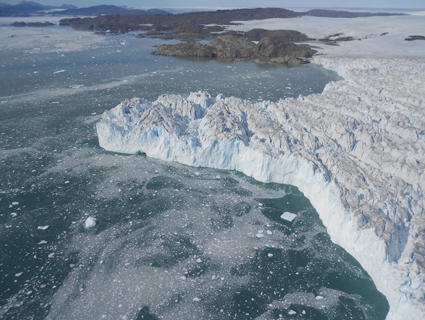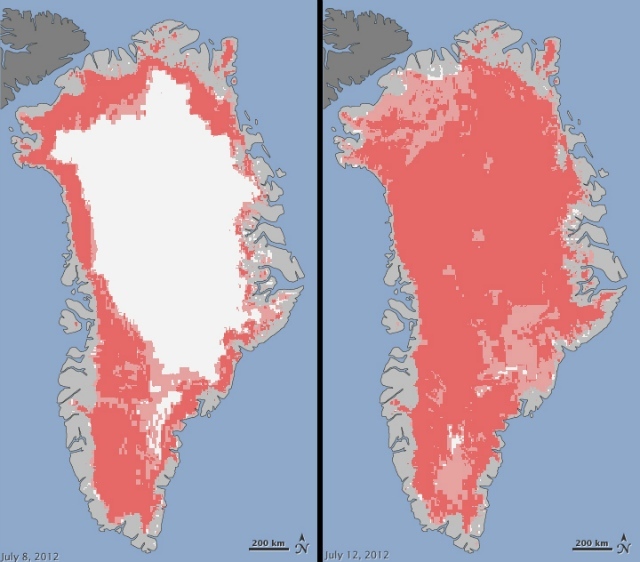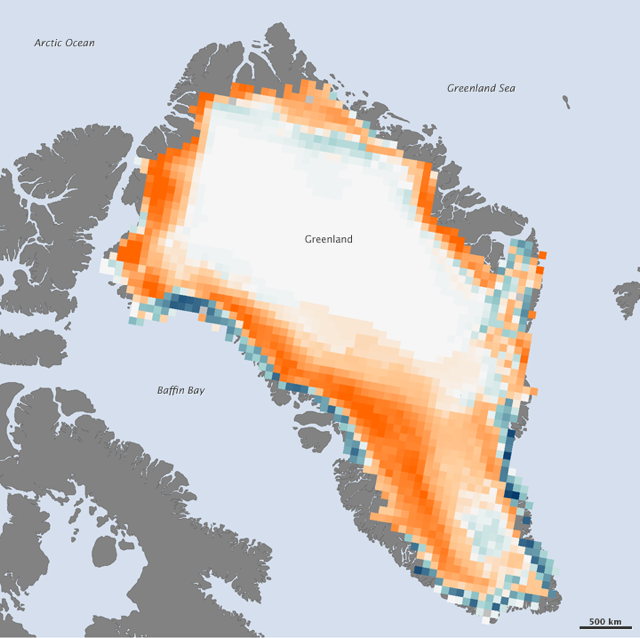
The Greenland Ice Sheet might be able to reign in its rapid melting.Niels J. Korsgaard, Natural History Museum of Denmark.
To view photo descriptions, click full screen, then “Show info.”
One of the primary forces behind climate-change-driven sea level rise is the Greenland Ice Sheet. Covering 80 percent of Greenland, it’s the world’s second-largest chunk of ice (after the Antarctic Ice Sheet) and dumps 240 billion tons of fresh water into the oceans every year, accounting for a full fifth of annual sea level rise. And in recent years it’s been melting faster than ever, enough to make it a primary target of the Intergovernmental Panel on Climate Change, which has tapped teams of scientists to see what the full effect of the increased melting could be. Some reports say the rise worldwide from a disappearing Greenland Ice Sheet could be as much as a meter, enough to wreak havoc on places like New York City and low-lying Palau.
But a study out yesterday in Science paints a more optimistic picture: Even with global warming, the ice sheet may be able to slow its melting rate much faster than previously thought. A team of Danish researchers used archived aerial photos (shown in the slideshow above) of the ice sheet, dating back to the early ’80s, to compare other episodes of rapid melting in the last few decades. What they show, lead author Kurt Kjær of the University of Copenhagen said in a statement, is that the ice sheet is dynamic, able to shift quickly from melting to holding firm; the record melt we’ve seen recently could be over in as soon as eight years. For that reason, he said, it’s wrong to use the current melting rate to make predictions about sea level rise in the coming century, as some studies have done.
“It’s too early to proclaim the ‘ice sheet’s future doom’ and subsequent contribution to serious water problems for the world,” he said. “It turns out that the ice sheet is able to more quickly stabilize itself in comparison to what many other models and computer calculations predict.”
Photos courtesy of Niels J. Korsgaard and Anders A. Bjørk, Natural History Museum of Denmark











